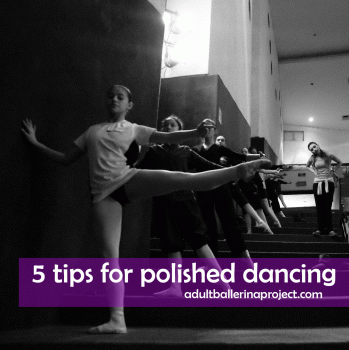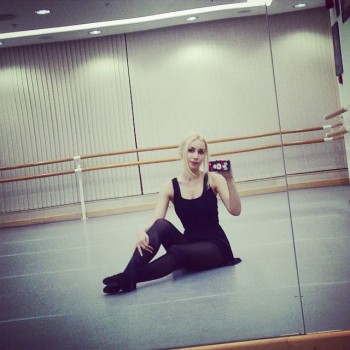 Ballet is an intricate, complicated style of dance. Whether training begins at a young age or later in life, the technique is challenging and requires not only great strength of the body, but of the mind, as well. Sometimes, successfully memorizing combinations and releasing the distracting thoughts of the day is a triumph in itself.
Ballet is an intricate, complicated style of dance. Whether training begins at a young age or later in life, the technique is challenging and requires not only great strength of the body, but of the mind, as well. Sometimes, successfully memorizing combinations and releasing the distracting thoughts of the day is a triumph in itself.
At times, the details of the steps may overwhelming. However, by focusing on five key points of ballet technique, your dancing will look polished and clean, even if you muddle up the ronde de jambe combination!
Five Tips for Polished Dancing:
Keep your core tight.
In every movement of every combination, keep your core tight. By pulling your abdominals up and squeezing your glutes together, your dancing becomes a strengthening exercise, in addition to artistic expression.
Fix your gaze slightly above eye level.
A small increase in eye level can do wonders! Try to avoid looking at the floor, which creates a shy, unsure effect. Your upper body presentation will instantly improve, as well as your self confidence.
Release tension in your hands.
Achieving a lovely, gentle hand position is tricky, especially when holding muscle tension in your hands. Try this easy fix: touch the tip of your middle finger to your thumb throughout the combination. The tension leaves automatically!
Use your back to support your arms.
While performing quick footwork at the barre, your arm in second position may gradually begin to droop. Use your back muscles to support the position, rather than letting your arm grow tired. A strongly held arm completes every position.
Relax and smile!
While a giant smile might come off as a little extreme, maintaining a happy, pleasant expression captures everyone’s attention. Remember, dancing is supposed to be enjoyed, so let the joy shine from your face!
Sometimes, tiny changes bring about grand improvements. By integrating these five tips into your class time, your dancing will look clean and polished!
Image by Gabriel Saldana modified using Creative Commons permissions
 When did you start doing ballet as an adult?
When did you start doing ballet as an adult? In addition to physical practice, visualization can help you overcome those tricky steps
In addition to physical practice, visualization can help you overcome those tricky steps
